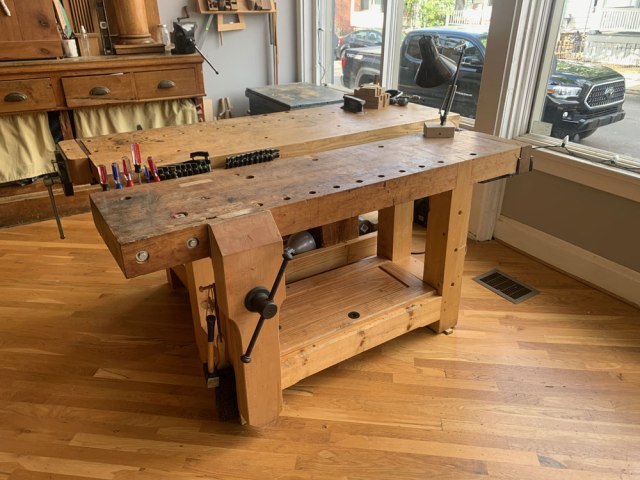Jameshow
Established Member
It really is hard to make an ugly table, but I really feel they have achieved it!Please don’t copy that, it’s a monstrosity.

It really is hard to make an ugly table, but I really feel they have achieved it!Please don’t copy that, it’s a monstrosity.
I meant that making a table by pinning mortices is just one technique, draw-boring is an additional one, there are other ways, more or less effective, non of them "the correct way".Sorry @Jacob , you've lost me there.








I meant that making a table by pinning mortices is just one technique, draw-boring is an additional one, there are other ways, more or less effective, non of them "the correct way".
I wouldn't have though many table joints were draw-bored pinned as tables tend to be rectangular and easy to clamp one way or another. Must have a look next time I saw up a table!
Yes, draw boring was used for centuries before clamps were invented. It might be a challenge to the OP who is a novice but certainly very satisfying to do.I would only add that if you pin the tenons into the mortices, in the correct manner,
there is no need for clamps, and the whole assembly will pull together as tight and
snug as you like.
Simple to do and, personally, a very satisfying part of the process.
It does, but if you look carefully you can see just a hint of the table leg to the left of the stool leg. Either that, or it's one of those impossible constructions you can find on the internet.To my eyes, it looks like one of the legs of the seat has "fallen off"
With or without beer goggles on @Adam W. it is still a pile ofPlease excuse the glib comments from the above forumites, they all drink heavily on a Saturday afternoon and can't control themselves after 7 o'clock in the evening.
@Crazy Dave I would have offered a greeting, but I didn't see an introduction, you never need to apologise for me, simple question asked, simple answer given!Can I start by saying welcome to the forum.
I'd like to apologize for the greeting some others have given you.
I would strongly suggest you take this offer up.Where in Kent are you? I've made a good few tables and can probably show you how to construct a more refined version of this quite quickly.
And expensive, but don't tell the wife that part.be warned wood work is addictive AND catching


I thought I had, twice, just not one like this!The OP wants to build a table, you could at least encourage them, after all we all started somewhere, no?
I thought I had, twice, just not one like this!
Enter your email address to join: